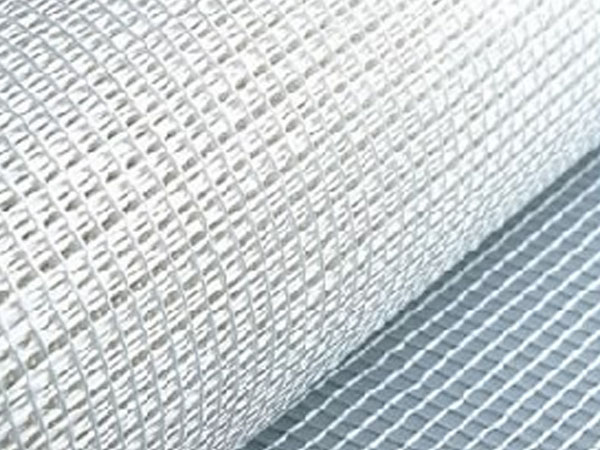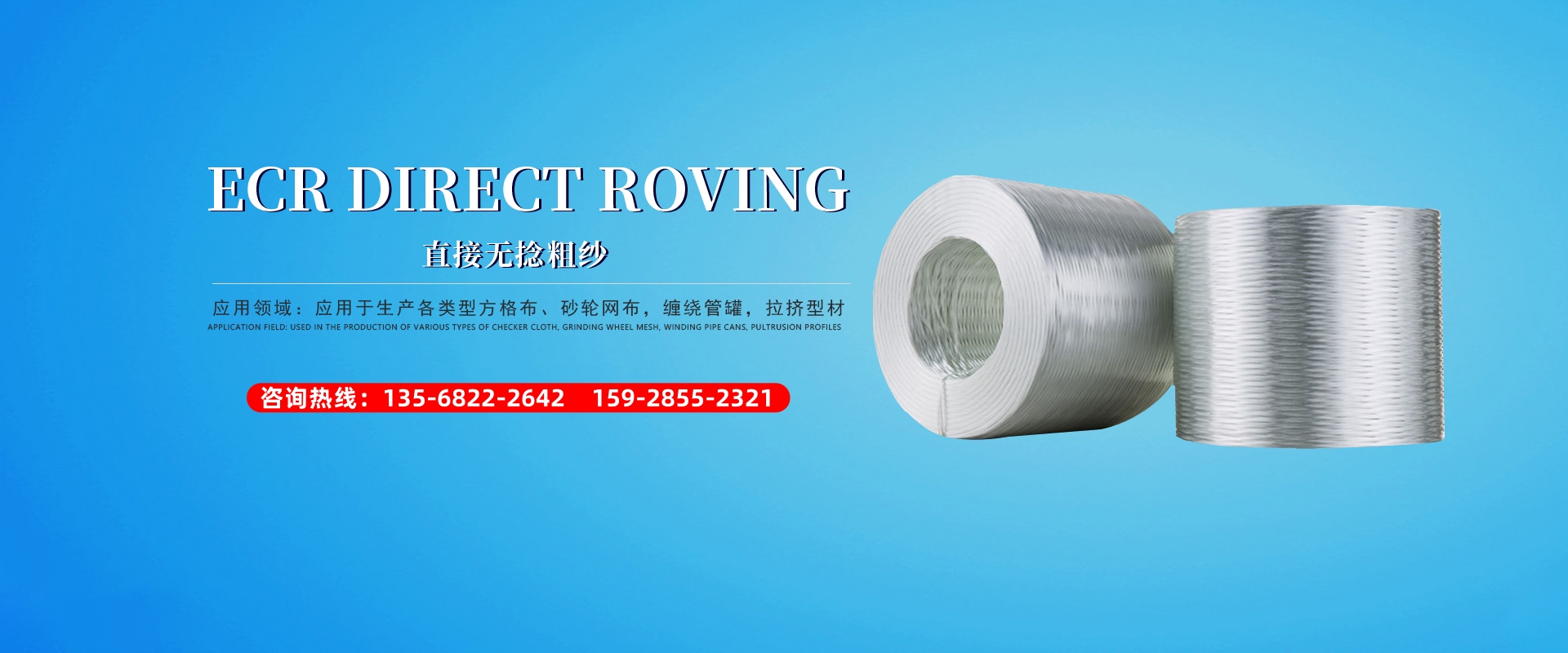Main components of glass fiber:
Its main components are silicon dioxide, aluminum oxide, calcium oxide, boron oxide, magnesium oxide, sodium oxide, etc. According to the amount of alkali content in the glass, it can be divided into alkali free glass fiber (sodium oxide 0%~2%, belonging to aluminum borosilicate glass), medium alkali glass fiber (sodium oxide 8%~12%, belonging to sodium calcium silicate glass with or without boron) and high alkali glass fiber (sodium oxide more than 13%, belonging to sodium calcium silicate glass).
Main features:
Melting point glass is a kind of amorphous glass, which has no fixed melting point. It is generally believed that its softening point is 500~750 ℃, boiling point is 1000 ℃, and density is 2.4~2.76g/cm3. When glass fiber is used as reinforcement material of reinforced plastics, its biggest feature is high tensile strength. The tensile strength is 6.3~6.9 g/d in standard state and 5.4~5.8 g/d in wet state. The density is 2.54g/cm3. It has good heat resistance and has no effect on the strength when the temperature reaches 300 ℃. With excellent electrical insulation, it is a high-grade electrical insulation material, and also used as thermal insulation material and fireproof shielding material. Generally, it is only corroded by concentrated alkali, hydrofluoric acid and concentrated phosphoric acid.

Raw materials and their applications: Glass fiber is more resistant to temperature than organic fiber, nonflammable, anti-corrosion, heat insulation, sound insulation, high tensile strength, and good electrical insulation. However, it is brittle and has poor wear resistance. As a reinforcing material, glass fiber is used to manufacture reinforced plastics (see the color picture) or reinforced rubber, which has the following characteristics. These characteristics make glass fiber more widely used than other types of fibers, and its development speed is far ahead. Its characteristics are listed as follows:
(1) High tensile strength and small elongation (3%).
(2) High elasticity coefficient and good rigidity.
(3) The elastic limit has large elongation and high tensile strength, so the impact energy absorbed is large.
(4) It is an inorganic fiber with good incombustibility and chemical resistance.
(5) Low water absorption.
(6) Good dimensional stability and heat resistance.
(7) Good processability, can be made into strands, bundles, felt, weaving and other different forms of products.
(8) Transparency can penetrate light.
(9) Good adhesion with resin.
(10) The price is cheap.
(11) It is not easy to burn and can be melted into glass beads at high temperatures.
Main purpose:
Glass fiber products are widely used in various fields of the national economy, among which electronics, transportation and construction are the three most important application fields, and also represent the development trend of the world glass fiber industry in the next few years.
Untwisted roving
Twistless roving is composed of parallel strands or parallel monofilaments. The roving can be divided into alkali free glass roving and medium alkali glass roving according to the glass composition. The diameter of glass fiber used for producing glass roving ranges from 12 to 23 μ m。 The number of roving is from 150 to 9600 (tex). The twistless roving can be directly used in some composite process forming methods, such as winding and pultrusion. Because of its uniform tension, it can also be woven into the twistless roving fabric. In some applications, the twistless roving can be further shortened.
(1) Jet roving The untwisted roving suitable for FRP spray forming shall have the following properties: ① good cutting performance, less static electricity generated during continuous high-speed cutting; ② After the untwisted roving is cut, the efficiency of dispersing it into precursor yarn should be high, that is, the beam splitting rate should be high, usually more than 90%; ③ The chopped precursor has excellent mold covering property, which can cover all corners of the mold; ④ Fast resin penetration, easy to be flattened by roller and easy to drive away bubbles; ⑤ The spinning barrel has good unwinding performance and uniform roving linear density, which is suitable for various spray guns and fiber conveying systems. Jet roving is made of multiple strands of filaments, each strand contains 200 glass monofilaments.
(2) The untwisted roving SMC for SMC, namely sheet molding compound, is mainly used to press automobile parts, bathtubs, water tank plates, purification tanks, various seats, etc. The twistless roving for SMC shall be cut into lin (25mm) length when making SMC sheets and dispersed in the resin paste. Therefore, the requirements for the twistless roving for SMC are good chopping property, less hairiness, and good anti-static property. The chopped yarn will not adhere to the knife roll when cutting. For colored SMC, untwisted roving shall be soaked in resin paste with high pigment content. Generally, the SMC roving is 2400 tex, and 4800 tex can also be used in a few cases.
(3) The winding method of untwisted roving is used to manufacture glass fiber reinforced plastic pipes and storage tanks of various calibers. The number of twistless roving used for winding is from 1200 to 9600. The direct twistless roving is preferred for winding large pipes and tanks, such as 4800tex direct twistless roving. The requirements for untwisted roving for winding are as follows: ① good banding property, flat ribbon; ② The untwisted roving has a good unwinding property, and does not unroll when unwinding from the bobbin, and does not form a "bird's nest" shaped disordered yarn; ③ The tension is even without overhang; ④ Uniform linear density, generally less than ± 7%; ⑤ The untwisted roving has good permeability and is easy to be wetted and soaked by resin when passing through the resin tank.
(4) The untwisted roving for pultrusion is used to manufacture various profiles with consistent cross section, which is characterized by high glass fiber content and high unidirectional strength. The twistless roving for pultrusion can be either a multi strand yarn or a direct twistless roving, and its linear density ranges from 1100 to 4400. All kinds of performance requirements are basically the same as those of winding roving.
(5) One of the important uses of the twistless roving for weaving is to weave various thicknesses of checkered cloth or unidirectional twistless roving fabrics, which are mostly used in the hand lay up FRP molding process. There are the following requirements for the untwisted roving for strengthening: ① good wear resistance; ② Good zonation; ③ The twistless roving for weaving needs to be forced dried before weaving; ④ The tension of untwisted roving is uniform, and the drape should meet certain standards; ⑤ The untwisted roving has good unwinding property; ⑥ The untwisted roving has good permeability.
(6) The preform uses untwisted roving. In the preform process, the untwisted roving is cut short and sprayed on the predetermined shape of the mesh. At the same time, a small amount of resin is sprayed to fix the mesh into shape. Then, the shaped mesh is moved into the metal mold and injected into the resin for hot pressing to form the product. The performance requirements for this process of untwisted roving are basically the same as those for jet untwisted roving.
 135-6822-2642
135-6822-2642
 135-6822-2642
135-6822-2642

